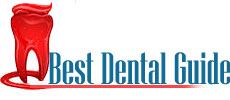Do Pets Need Dental Care?
We humans brush our teeth at least twice a day in order to keep our teeth healthy. Dogs and cats have teeth just like we do, and the same conditions that lead to our tooth and gum problems also occur in our pets mouths. Oral hygiene has perhaps been the most neglected aspect of pet health care. Lets now look at some facts about pets dental structure :
Types of teeth
Mammalian carnivores have teeth that line the upper and lower jaws. There are four types of teeth with different functions:
- Incisors: cutting and nibbling food
- Canine teeth: holding and tearing food
- Premolars: cutting, holding, and shearing food
- Molars: grinding food
Numbers of teeth
Many mammals, including dogs, cats, and ferrets are "diphyodont" meaning they have two sets of teeth, one set (called "deciduous") being shed and replaced by a permanent set. Although the exact number can vary, puppies have 28 deciduous (temporary or "baby") teeth, and adult dogs have 42 permanent teeth. Feline kittens have 26 deciduous teeth, and adult cats have 30 permanent teeth. Ferret kits have 30 deciduous teeth, with adults having 34.
Tooth eruption
In kittens and puppies, the deciduous teeth begin to erupt at about 3-4 weeks of age and the permanent teeth begin to emerge at about 3-4 months of age. By 24 weeks of age, usually all of the permanent teeth have emerged.
Pets Dental Problem
- Pets mouths are biologically similar to humans. Their teeth can form plaque and tartar build-up and bacterial infections.
- A significant bacterial infection growing under the gums can damage the gums and bone. This is called periodontal disease, and the pet should receive the appropriate treatment from a veterinarian.
- If a tooth has been cracked or chipped, bacteria may migrate deeper into the surrounding tissues and cause inflammation or an abscess. In some cases, abscessed teeth require extraction.
- Periodontal (gum) disease is the number one diagnosed problem in dogs and cats. By the age of just two, 80% of dogs and 70% of cats have some form of periodontal disease. In addition, 10% of dogs have a broken tooth with pulp (nerve or root canal) exposure. This is extremely painful until the nerve dies, at which point the tooth becomes infected! Infectious oral diseases affecting the gums and root canals create systemic bacteremia (bacteria in the blood stream, which can infect other parts of the body).
- Periodontal inflammation and infection have been linked to numerous problems including heart attacks, strokes, kidney disease, emphysema, liver disease, osteoporosis, pregnancy problems and diabetes. Therefore, oral infectious diseases are known as “the silent killer.”
- In addition to systemic effects, oral disease can also cause inflammation to the eye, resulting in blindness. Furthermore, jaw bone loss from chronic infection can lead to a jaw fracture known as a pathologic fracture, and these have a very hard time healing. Finally, infectious oral disease can result in osteomyelitis (an area of dead, infected bone), nasal infections and an increased risk of oral cancer.
- In cats, a very common problem is feline tooth resorption lesions, which are caused by normal cells called odontoclasts eating away at the cat’s own teeth. Approximately half of cats over 6 years of age have at least one. They are similar to cavities in that once they are advanced, they are very painful and can become infected. They are first seen as small red areas along the gumline.
- Other oral problems include bacterial cavities, painful orthodontic problems, dead teeth (which are commonly discolored), and worn teeth. Almost every pet has some form of painful or infectious oral disease that needs treatment.

Prevention is Better than Cure
Annual or semi-annual visits to your veterinarian should be utilized to establish a prevention/treatment plan for dental health care year round. Owners noticing changes in their pet’s behavior, eating habits, and/or teeth are encouraged to seek professional advice from their veterinarian.












Leave a Comment